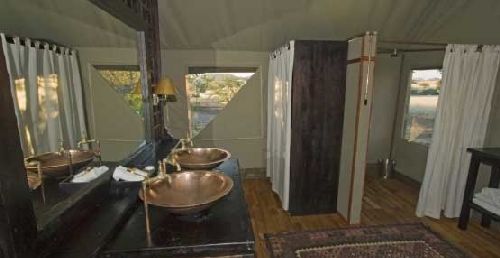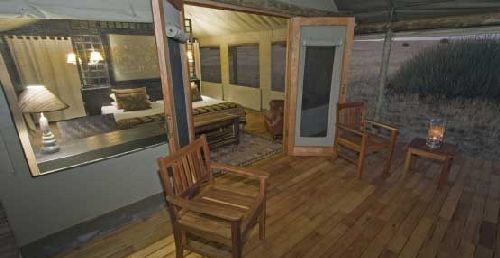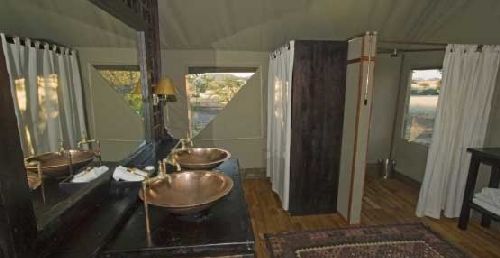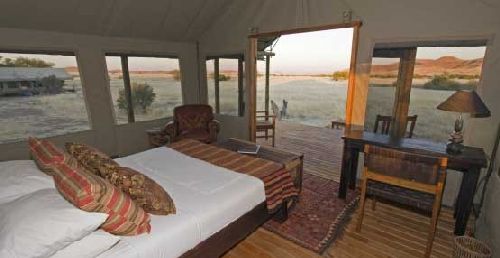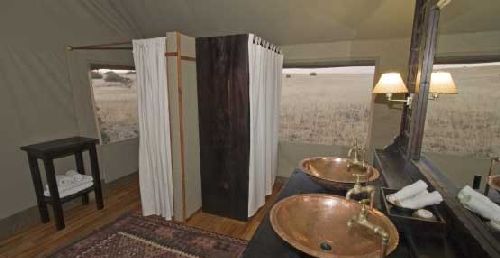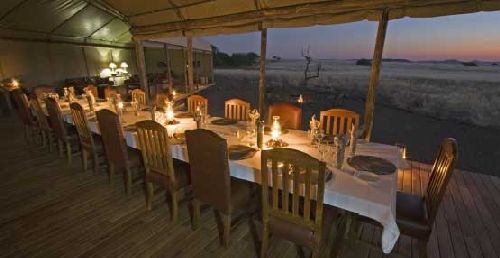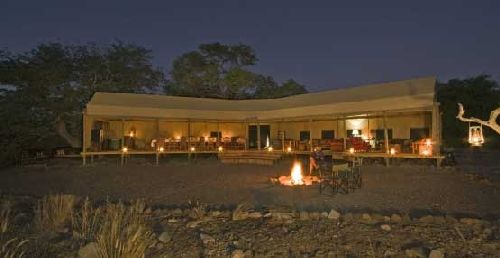Desert Rhino Camp
| Destination | Namibia |
Desert Rhino Camp Amenities
The tented restaurant and lounge area of Desert Rhino Camp is also raised on a wooden deck in a single tent which is open plan and has partially open sides offering panoramic views. To one side there are couches and to the other a large, simple dining table. Evening meals are taken around the fire pit, in front of the lapa, where guests can relax and socialize.Directions To Desert Rhino Camp
Desert Rhino Camp is situated in Kunene Namibia.Area Attractions
The Palmwag Concession is a 450 000-hectare conservancy in Damaraland in the Kunene Region of north-west Namibia. Considering the proximity of the concession to the Skeleton Coast Park and true Namib Desert, this area is home to a rich diversity of wildlife. Early morning fog generated by the icy Benguela Current in the Atlantic Ocean meeting the warm desert air of the Skeleton Coast drifts inland over the Namib Desert providing precious water to the flora and fauna in this incredibly harsh environment. Adaptation to the desert environment is the miracle of all that survives here in the Palmwag Concession. The Etendeka Mountains dominate the scenery - impressive flat-topped outcrops coloured ochre-brown. Dry river-courses like the Uniab River cut through the landscape and occasionally fill with water. The terrain is rocky but often covered with fine golden grasses and interspersed with large Euphorbia damarana bushes, which are endemic to the area. Other fascinating plants in the Palmwag Concession include the odd-shaped bottle tree, shepherd's trees, ancient leadwoods, salvadora bushes and unique welwitschias. The Palmwag Concession's freshwater springs support healthy populations of arid-adapted wildlife. Good numbers of Hartmann's mountain zebra, southern giraffe, gemsbok (oryx), springbok, kudu, dwarf antelope (such as steenbok and klipspringer), scrub hare, comical meerkats (suricates), inquisitive ground squirrels, black-backed jackal and small spotted genet can be seen. A major drawcard to the region is that the Palmwag Concession supports the largest free-roaming population of desert-adapted black rhino in Africa, as well as a healthy number of desert-adapted elephants. The Palmwag Concession also holds the core of the rarely seen desert-adapted lion population of north-west Namibia. Cheetah and leopard also sometimes seen in this area. Birding enthusiasts are sure to enjoy the diverse avifauna found in the Palmwag Concession. Raptors include Greater Kestrel, Lanner Falcon and Booted Eagles, spotted in the sky or perching on a lonely shepherd's tree. Out on drives, it is possible to see Namaqua Sandgrouse, Burchell's Courser, the colourful Bokmakierie, Grey-backed Sparrowlark, Monteiro's Hornbill and White-backed Mousebird. Other regular endemics include Rüppell's Korhaan, Benguela Long-billed Lark and possibly Herero Chat with some focused searching. Verreauxs' Eagle is often sighted around rocky hillsides.Desert Rhino Camp Namibia Accommodation
Desert Rhino Camp is located in Namibia. We provide accommodation, hotel information, holiday specials, packages, photos, rates and Desert Rhino Camp reviews. Book Desert Rhino Camp online and Save!

